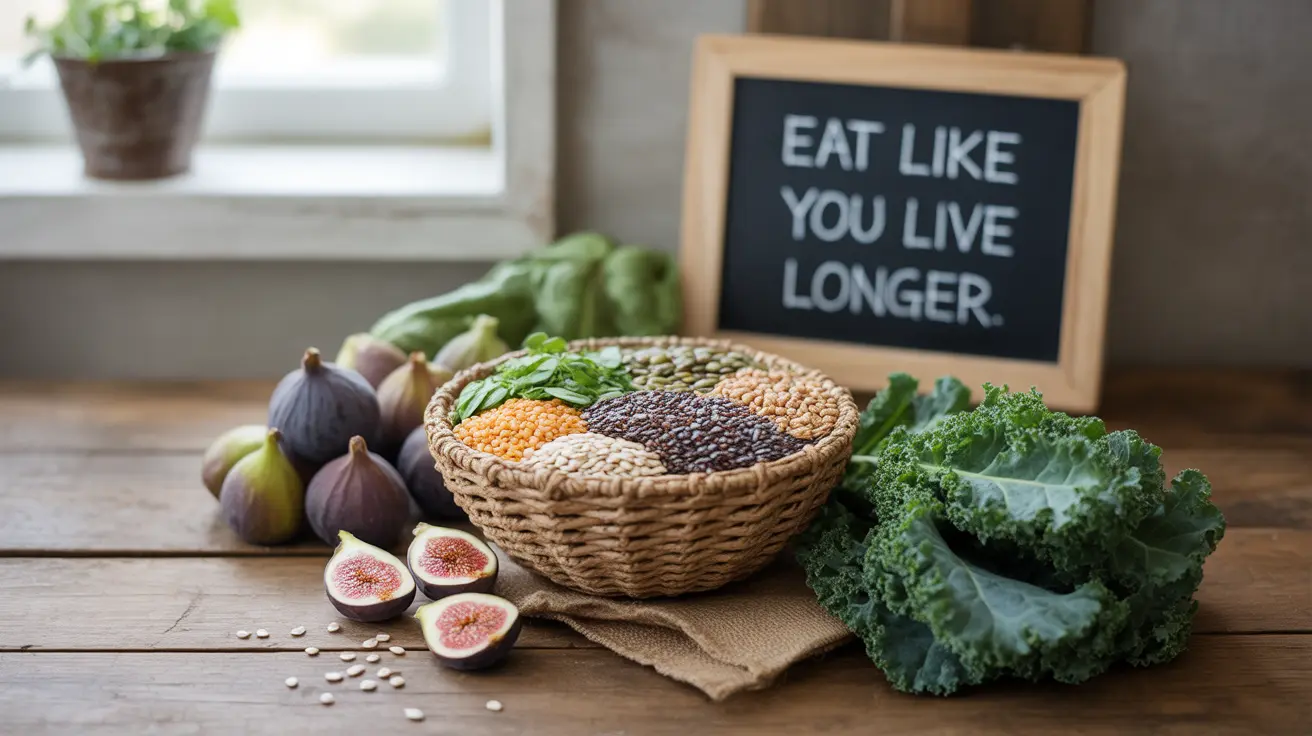The Blue Zone diet has captured worldwide attention for its remarkable connection to longevity and wellness. These dietary patterns, observed in regions where people consistently live past 100, offer valuable insights into the foods that may contribute to a longer, healthier life.
Understanding and incorporating Blue Zone foods into your diet could be a powerful step toward improving your health and potentially extending your lifespan. Let's explore the essential foods and eating patterns that characterize these remarkable regions.
Key Plant-Based Foods in Blue Zones
Blue Zone communities primarily follow a plant-based diet rich in natural, whole foods. The most prominent foods include:
- Legumes (beans, lentils, chickpeas)
- Whole grains (barley, brown rice, whole wheat)
- Leafy greens and vegetables
- Fresh fruits
- Nuts and seeds
These plant-based foods form the foundation of every Blue Zone meal, providing essential nutrients, fiber, and protective compounds that support longevity.
The Role of Legumes in Blue Zone Diets
Legumes are particularly significant in Blue Zone regions, with most communities consuming at least one cup daily. These protein-rich foods are packed with fiber and nutrients that support heart health and help maintain steady blood sugar levels.
Popular Blue Zone Legume Preparations
- Sardinian minestrone with beans
- Okinawan stewed soybeans
- Nicoya's black beans with rice
- Greek-style lentil soups
Whole Grains and Traditional Breads
Whole grains appear frequently in Blue Zone diets, often in the form of traditional sourdough bread, corn tortillas, or brown rice. These complex carbohydrates provide sustained energy and important nutrients while supporting gut health.
Limited Animal Products
While Blue Zone diets aren't strictly vegetarian, they limit animal products significantly. Most communities consume meat only about five times per month, in small portions. Fish appears more frequently, especially in coastal regions like Sardinia and Okinawa.
Regional Variations in Blue Zone Eating
Okinawa, Japan
The Okinawan diet features:
- Sweet potatoes as a staple
- Abundant sea vegetables
- Turmeric-rich seasonings
- Minimal dairy and meat
Sardinia, Italy
Sardinian communities emphasize:
- Whole-grain sourdough bread
- Fresh vegetables and herbs
- Pecorino cheese from grass-fed sheep
- Moderate red wine consumption
Nicoya Peninsula, Costa Rica
The Nicoya diet includes:
- Black beans and rice
- Tropical fruits
- Corn tortillas
- Squash and other local vegetables
Frequently Asked Questions
- What are the most important plant-based foods to eat in the Blue Zone diet?
The most important plant-based foods in the Blue Zone diet are legumes (especially beans and lentils), whole grains, leafy greens, sweet potatoes, nuts, and fresh fruits. These foods should make up the majority of daily meals.
- How do Blue Zone foods contribute to longer life and lower risk of chronic diseases?
Blue Zone foods are rich in antioxidants, fiber, and healthy fats while being naturally low in processed ingredients. This combination helps reduce inflammation, supports heart health, maintains healthy blood sugar levels, and provides essential nutrients that protect against chronic diseases.
- Can eating Blue Zone foods help prevent heart disease and Type 2 diabetes?
Yes, the high-fiber, plant-based nature of Blue Zone foods can help prevent heart disease and Type 2 diabetes by reducing inflammation, maintaining healthy cholesterol levels, and stabilizing blood sugar. The abundance of antioxidants and healthy fats also supports cardiovascular health.
- Which animal products are allowed or limited in a typical Blue Zone diet?
Animal products are consumed in moderation in Blue Zones. Meat is typically eaten only about five times per month in small portions. Fish is more common, especially in coastal regions. Eggs and dairy appear in some areas but are not daily staples.
- How do Blue Zone eating habits differ across regions like Okinawa, Sardinia, and Nicoya?
While all regions emphasize plant-based foods, each has unique characteristics. Okinawans favor sweet potatoes and sea vegetables, Sardinians include moderate amounts of sheep's milk cheese and red wine, and Nicoyans emphasize beans, corn tortillas, and tropical fruits. These variations reflect local agriculture and cultural traditions while maintaining common healthy eating principles.




